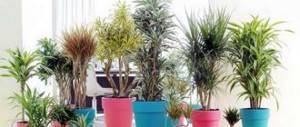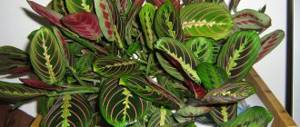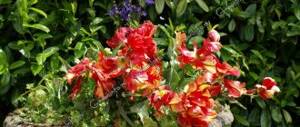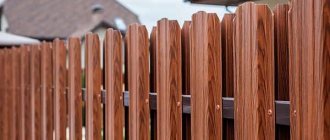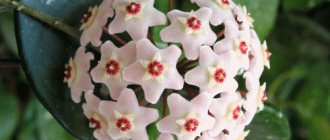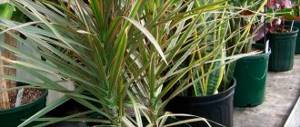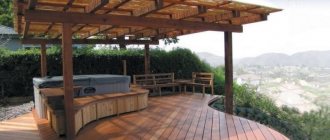Looking for climbing plants for your garden? Annuals and perennials have their own advantages. The former are distinguished by violent flowering, which continues until the onset of frost. The latter grow on the site for many years and delight with greenery with the onset of early spring. Which climbing flowers should you choose for your garden? Let's figure it out.
Photo: pixabay.com
Plants-vines serve as an excellent decoration in the garden and can hide the imperfections of the site. Let's briefly look at the advantages of both types of weaving flowers:
- Annual seeds are inexpensive, easy to sow, and grow quickly. In addition, annuals do not become boring, because every year you can create new compositions.
- Perennials do not require annual planting, winter well, and many varieties do not require shelter. Dense thickets of plants create pleasant shade throughout the summer.
What climbing plants to choose for your dacha and garden? Here's what you should take a closer look at:
Climbing plants for the garden: sweet peas
This delicate, fragrant plant will win your heart forever if you at least once try to plant it on your site. The flowers, which look like miniature copies of orchids, exude a vanilla aroma, and the variety of colors is off the charts - from white to purple and brown.
These are ideal climbing flowers for the garden, blooming from late May until the first frost. Here are the conditions the plant needs to provide:
Climbing garden flowers for: dolichos
This vine is also called hyacinth bean, climbing lilac. In our latitudes, dolichos is grown as an annual and is ideal for decorating hedges, landscaping walls, arches, because the plant reaches 4 meters in height.
Delicate white and purple inflorescences appear from July to September, after which purple beans are formed. The leaves of dolichos are no less decorative - large with a purple tint. The plant prefers the following conditions:
- protected sunny place;
- regular watering;
- application of mineral fertilizers during growth and flowering.
The plant has a wonderful aroma and creates a thick carpet of greenery. Interestingly, these flowers entwine the supports counterclockwise and do not have tendrils. Depending on the variety, the inflorescences can be two-colored, as well as white, pink, and crimson. The seeds obtained from the beans will serve as seedlings for the next year.
Climbing plants for the garden: kobeya
One of the most spectacular and beautiful vines, which stands out with large white and purple flowers. In warm climates, kobeya is grown as a perennial, and its colors are more varied. In our latitudes, the plant needs to be planted at the end of May, preferably as seedlings, in order to get flowering by July.
Tender shoots grow up to 4 meters and weave along the support with the help of tendrils. Faded flowers fall off on their own, and soon new buds appear.
Climbing flowers, photos of which you will like, love the following conditions:
- sunny place;
- moderate watering;
- application of potash and phosphorus fertilizers.
Kobe seeds have a hard shell and take a long time to germinate. Therefore, they need to be sown as seedlings already in February with preliminary germination.
When sowing directly into open ground, you will have to wait a long time for flowering, until August. Lush greenery and large flowers look great on hedges, verandas, and gazebos.
Plant groups
Climbing perennials fall into three categories:
- Not needing support. Such plantings themselves provide reliable support with the help of aerial roots and shoots with suckers. They will fit perfectly on any rough surface. This group includes several varieties of grapes, creeping hydrangea and ivy.
- Those in need of support. Plants wrap around the base leg and move upward along it with the help of leaves and tendrils. These are clematis and grapes.
- Lianas wrapping around a support with strong stems. These include actinidia, hops, and lemongrass.
We invite you to familiarize yourself with Violet wavy leaves
Climbing perennials for the fence: actinidia
An ornamental fruit plant is considered a shrub vine. This beautiful plant serves as an excellent decoration for a house wall, gazebo or fence. The uniqueness of actinidia is not only in the fruits, but primarily in the unusual color of the leaves.
During the flowering period, the tips of the leaves turn white, then turn pink, and in the fall they turn yellow and red. In May–June, actinidia is covered with white fragrant flowers, and then edible fruits appear.
Hydrangea petiolate
This hydrangea with dense white inflorescences is attached to the support with the help of adventitious sucker roots and, without the need for tying, rises to a great height on its own. Large leaves turn yellow in autumn.
Related article:
Fixing an ugly flower garden: Some smart tips
Flowers
The flowers are white, in umbellate inflorescences.
Care
In the absence of rain and in sunny places, water regularly; Fertilize annually with mature compost. Prune after flowering; remove old shoots from time to time.
Note
Petiolate hydrangea easily climbs up without outside help, but if it grows near a smooth wall, it still needs support. In central Russia it requires shelter for the winter.
Hydrangea petiolate
Climbing plants for the gazebo: honeysuckle
A beautiful ornamental plant characterized by abundant flowering that resembles a cloud. A stunning citrus aroma spreads for several meters around.
The most common variety is honeysuckle. The liana sheds its greenery for the winter, and in late May or early June blooms profusely with white, yellow and pink flowers. This continues for 3 weeks, and then orange fruits appear. Honeysuckle needs to be provided with the following conditions:
- sunny place;
- moderate watering;
- application of organic fertilizers;
- pruning after six years.
Brown's honeysuckle is no less decorative. This semi-evergreen vine with clusters of red tubular flowers prefers partial shade. It blooms until frost, after which the fruits appear. Ideal for zoning a site, creating a canopy, decorating a fence.
Climbing ornamental plants with flowers
This option boasts an incredible variety of colors and shapes. In addition to beauty, they are very multifunctional: they create a magnificent living exhibition, and cover unsightly buildings with a vertical carpet.
Snow-white evergreen honeysuckle
The height of honeysuckle reaches 6 m. Suitable for creating a vertical hedge. It is installed along fences or buildings. Caring for it does not require much effort:
- It is planted in autumn or spring. The distance between planting holes is at least 1 m.
- Honeysuckle is moisture-loving. Thorough watering in preparation for winter is mandatory. It should be used with warm water with added fertilizer.
- For denser greenery and abundant flowers, pruning should be done after the first year from planting.
- Does not tolerate low temperatures well. Before wintering, carefully insulate the root system.
Climbing plants for the fence: clematis
Climbing vines with luxurious flowers of various colors create spectacular screens of greenery. It is believed that clematis is quite fastidious to care for. But if you follow certain rules, then the handsome plant will delight you with abundant flowering, which begins in early summer and ends in autumn.
The height of the vine can reach 3 meters, and the diameter of the flowers is 15 centimeters. Some varieties are distinguished by flat-petaled flowers, while others grow in the form of bells. Here are the conditions clematis prefers:
- sunny place;
- regular watering;
- application of organic fertilizers.
Keep in mind that the plant should not be planted under a roof, since the vine does not like stagnant moisture. It is better to take ready-made seedlings and transfer them to the site in the spring.
Clematis thrives climbing along chain-link fences and covering pergolas and arches. But you should not place it near a wall or metal fence.
Varieties of climbing plants for fences
When choosing a climbing fence, you need to pay attention not only to the beauty of the plant and its appearance. It is important that, in terms of winter hardiness and care conditions, it is suitable for a specific climate zone . To avoid having to form a hedge for many years, it is better to choose fast-growing species.
- Users often search for:
Fast growing perennials
They are best suited because making a hedge from such plants is simple and quick, and it lasts for many years. The shelf life in this case depends on the longevity of the selected shrubs and vines.
Hop
It is not the most popular fast-growing perennial plant as many people consider it to be harmful. In fact, the main advantage of hops is that they are low maintenance. This is an evergreen plant that grows along the fence throughout the year. It is distinguished by large leaves and fragrant flowers. After flowering, characteristic cones form on it. The plant reproduces easily and even too quickly. If a small part of the root falls on a free area, it will quickly germinate and occupy the entire free area.
Hops are a flowering climbing plant. Family Hemp.
The hop branches very quickly begin to entwine the support. To do this, simply lean a small branch against a support in the spring.
Probably the most popular option for a fast-growing shrub. It is unpretentious in care and especially in the planting site. Grows in both sun and shade. Creates comfort and coolness in the area. In the first year after planting it requires regular care, and then it becomes a beautiful fence. It is easy to adjust its shape by trimming. Grows in winter and summer. There are varieties that grow quickly, but there are also varieties with slow growth rates. You will have to tinker with such a fence, but the result is worth it.
Vitsa or ivy is a plant of the Araliaceae family.
Clematis
This liana-like plant is decorated with large flowers, and during the flowering period, clematis becomes a real decoration of the site. It can weave up to 5 meters high and can be used to make a variety of compositions and shapes. Perfectly hides an untidy wall. Blooms until frost. It is better to plant in well-lit areas. Clematis does not like wetlands. It is better to water rarely, but abundantly. When landing in northern and windy areas, it may die. It is a long-lived plant because it can live in one place for 20 years.
Photo: clematis, vine from Clematis - a plant of the ranunculaceae family
To prevent the roots from rotting, when planting it is better to use drainage in the form of crushed stone or broken brick. For clematis to bloom well, it requires a warm climate and regular feeding.
climbing grapes
We are talking about decorative grape varieties. This is a great plant for a gazebo, fence or any arch. The fast-growing perennial grape is tenacious and creates comfort and coolness. Basic care involves regular pruning and shaping of the vine.
Honeysuckle
This popular fast-growing shrub comes in several varieties. It is covered with beautiful flowers and fruits. Suitable for creating hedges or gazebos, as well as for decorating stairs and arches.
Ornamental honeysuckle's fruits are poisonous. This should be taken into account if there are children in the family who can reach the beautiful bush.
The flowers smell very fragrant. An enchanting smell spreads throughout the street.
Periwinkle
An unpretentious plant that has both deciduous and evergreen forms. It entwines any shape and grows up to 2.5 meters. Lesser periwinkle is distinguished by its small leaves and smaller size. It hides the imperfections of the site well and grows on almost any soil. It can grow in full shade and in full sun, but it is better suited to a site with sun until lunchtime and then light partial shade. Requires not frequent but regular watering.
Photo: creeping plant of the Kutrovye family
Winter-hardy
Winter-hardy plants are especially necessary in northern regions. They tolerate frost well and are usually easy to care for. Even the most winter-hardy crops will sometimes need shelter for the winter, since the ends of the branches may freeze in frost, and they will have to be cut off in the spring.
climbing rose
Queen of flowers in climbing form is also a frost-hardy plant. She will not just decorate the garden, but make it royal. Long and thin shoots weave to a height of up to 5 meters. There are varieties with shorter and more powerful shoots. But a rose, unlike many other plants, requires special care. The shoots need to be carefully tied up and not crushed.
Schisandra chinensis
It reaches a height of 15 meters. Blooms profusely with small white flowers. Suitable for hedges, as well as for shading gazebos and terraces. It got its name because of the subtle citrus aroma that its fruits give. It overwinters and grows well without any insulation in the conditions of Siberia and the Far East. The first year it grows slowly, and then becomes more active. Does not develop well in the sun, loves shady areas.
Photo: flowering plant of the Limonaceae family
For a hedge to look beautiful, it needs to be shaped. With lemongrass, this is especially important, since dead and dried branches will spoil the appearance of the hedge.
Schisandra will tolerate planting in the fall. To produce vibrant greenery, this plant requires regular feeding and watering.
Kampsis
A very beautiful liana with large orange flowers. At temperatures down to -20 C, it overwinters without pruning or shelter. If the air is colder, then it is recommended to cover the vine for the winter. Campsis grows quickly, grows on both the sunny and shady sides, and blooms from mid-summer to mid-autumn. Large flowers add exoticism to the area. It is used to decorate gazebos and arches, since when decorating walls it can grow roots through them and damage the stability of even brickwork. Likes soils that are breathable and moisture resistant. It should be tied to a support in the first year. Flowering begins 2-3 years after planting.
Photo: heat-loving plant of the Bignoniaceae family
Euonymus
The plant is poisonous, but outwardly beautiful. Varieties of this shrub have bright green leaves. Shrub forms are usually variegated. It reaches a height of 2.5 meters. At the same time, it can easily withstand frost down to -35 degrees. Grows best in moist soils and shade.
The fruits are poisonous, so children should be protected from euonymus.
It usually grows slowly, but if there is support, the branches can spread 6-7 meters in length. Needs shaping and pruning. The flowers are inconspicuous in appearance, but the beauty of this hedge option is in the lush greenery and large leaves that protect from dust and prying eyes.
